Gigabyte MZ72-HB0 Performance
At STH, we have an extensive set of performance data from every major server CPU release. Running through our standard test suite generated over 1000 data points for each set of CPUs. We are cherry-picking a few to give some sense of CPU scaling.
Python Linux 4.4.2 Kernel Compile Benchmark
This is one of the most requested benchmarks for STH over the past few years. The task was simple, we have a standard configuration file, the Linux 4.4.2 kernel from kernel.org, and make the standard auto-generated configuration utilizing every thread in the system. We are expressing results in terms of compiles per hour to make the results easier to read.
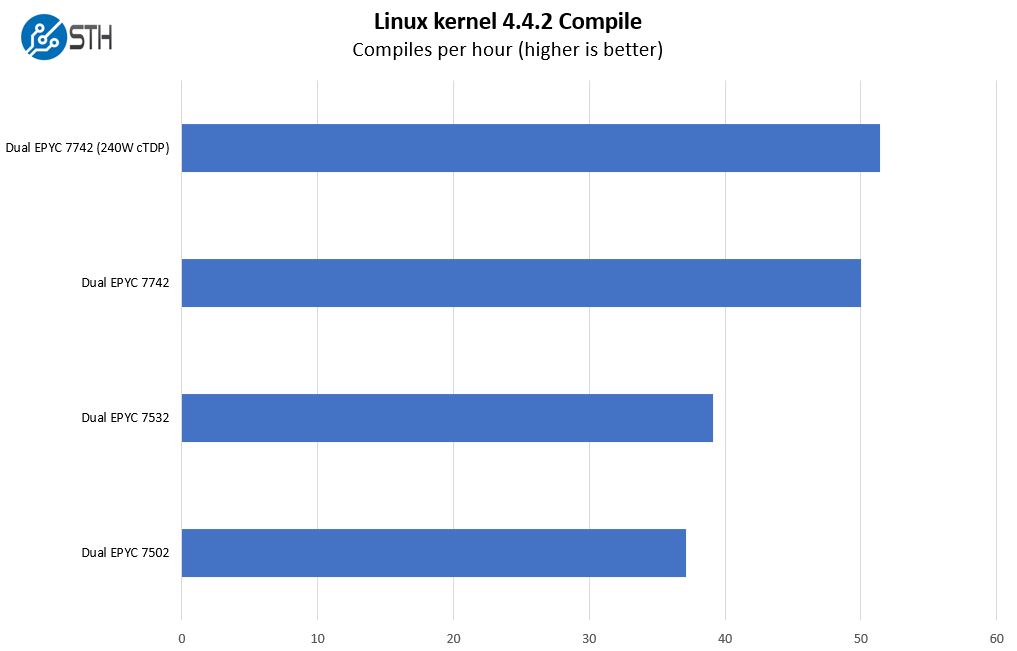
We are just going to note here that we are using a standard set of dual-socket CPUs across our recent reviews. Something that we noted is that we are generally within a +/-1.5-2% margin which we consider a test variation. If you are reading each of our dual-socket server/ motherboard reviews, the performance will be what you expect.
c-ray 1.1 Performance
We have been using c-ray for our performance testing for years now. It is a ray tracing benchmark that is extremely popular to show differences in processors under multi-threaded workloads. We are going to use our new Linux-Bench2 8K render to show differences.
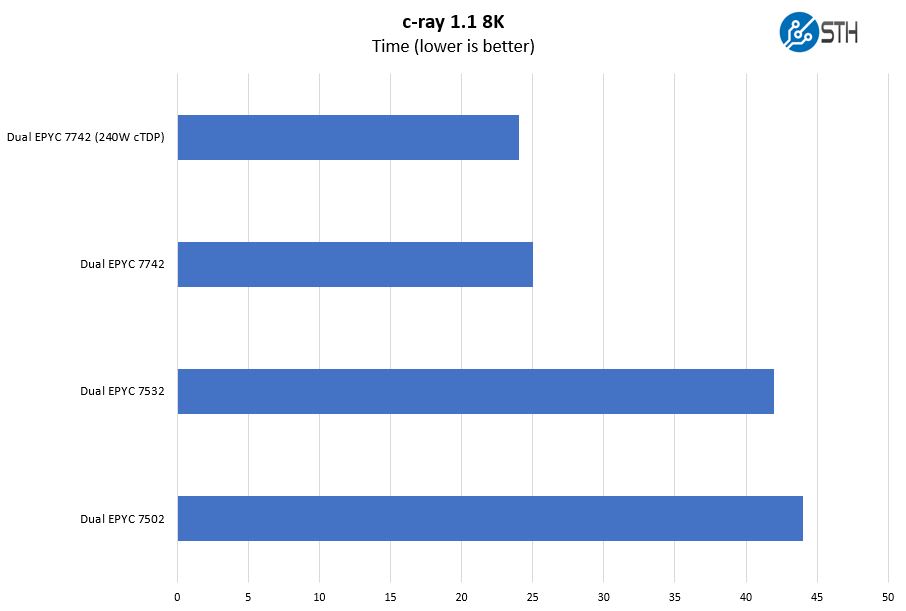
As you can see, we are testing the AMD EPYC 7742 at both 225W default TDP as well as the 240W cTDP. The fact that we can run at 240W and also run up to 280W means we can support chips like the frequency optimized CPUs that can utilize these higher TDP bands. We discussed those in our AMD EPYC 7F52 Benchmarks and Review.
7-zip Compression Performance
7-zip is a widely used compression/ decompression program that works cross-platform. We started using the program during our early days with Windows testing. It is now part of Linux-Bench.
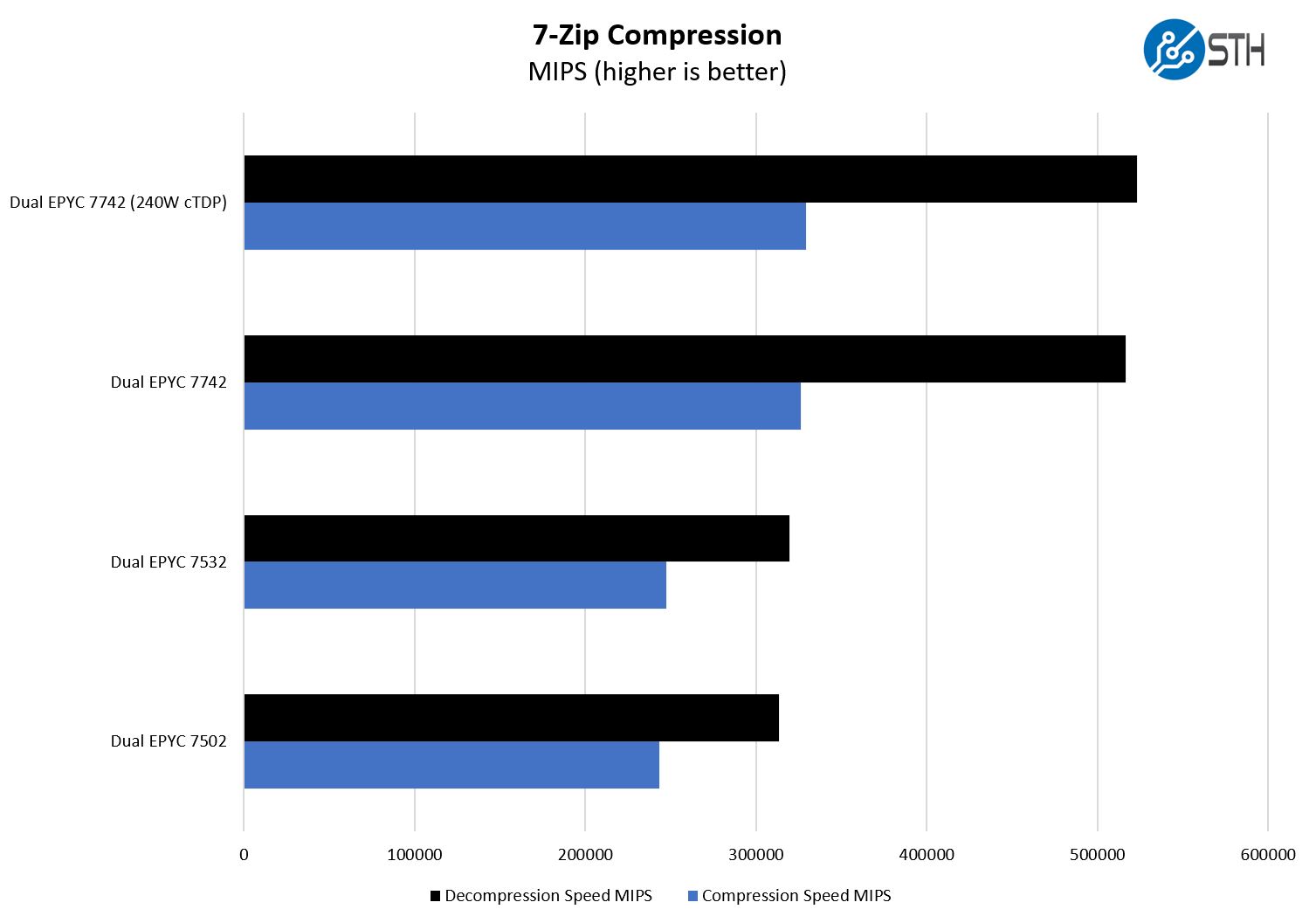
AMD has the ability to scale the number of processor cores to 64 which is well above Intel’s current 28-core limit. It is also beyond what we would expect from the 2021 Intel Ice Lake Xeon generation.
OpenSSL Performance
OpenSSL is widely used to secure communications between servers. This is an important protocol in many server stacks. We first look at our sign tests:
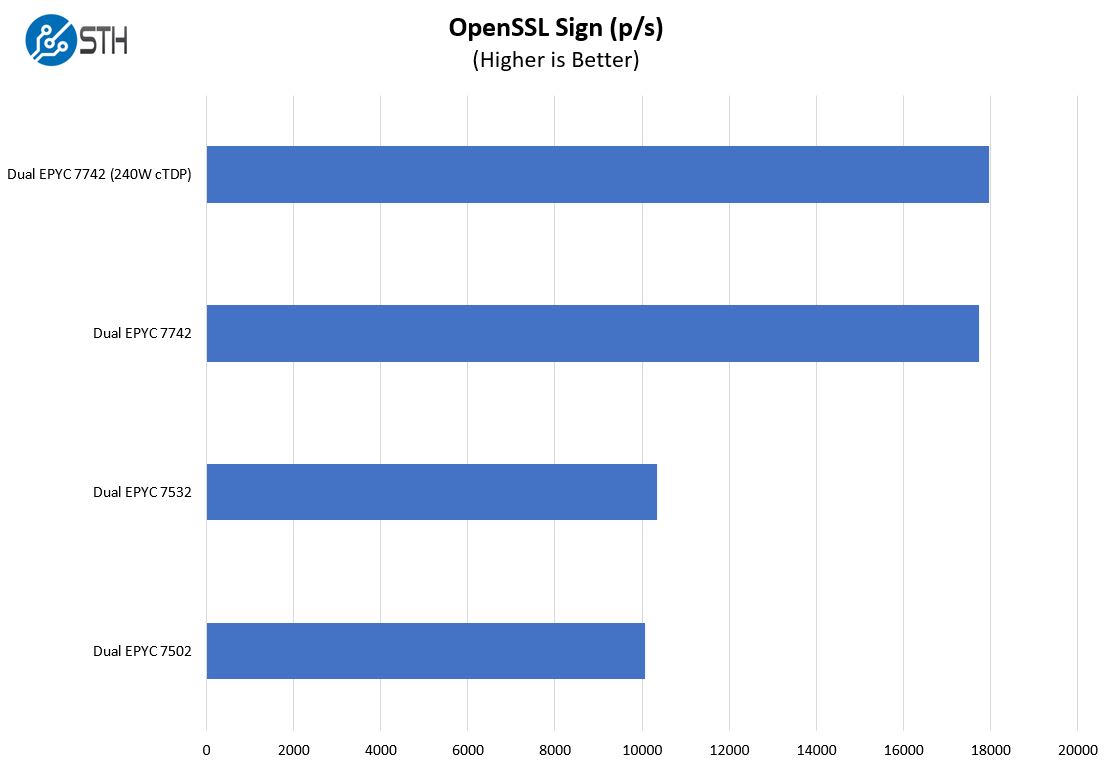
Here are the verify results:
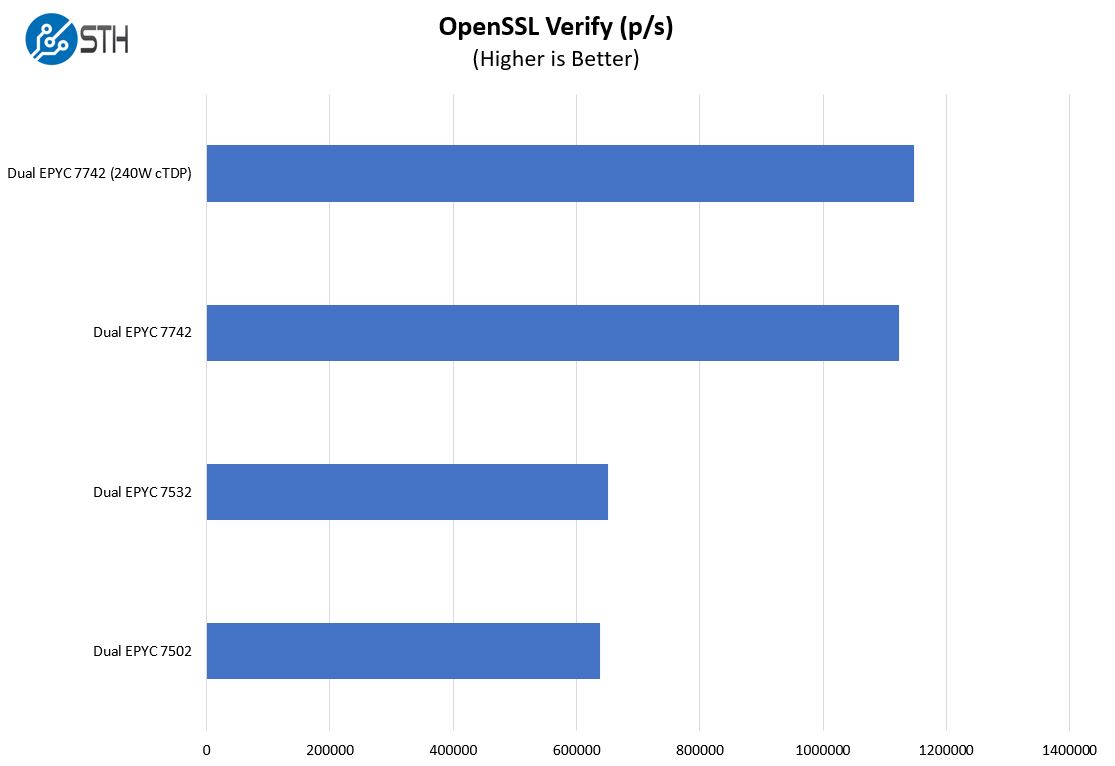
We are using the EPYC 7532 as a higher-performance 32-core option and the AMD EPYC 7502, as a lower-power option. 32-core is closer to mainstream parts. You can see the impact of moving to double the core count on some workloads is enormous. While we often focus on the higher-end parts, the lower-end parts are sold in higher quantities making them more relevant in many ways.
Chess Benchmarking
Chess is an interesting use case since it has almost unlimited complexity. Over the years, we have received a number of requests to bring back chess benchmarking. We have been profiling systems and are ready to start sharing results:
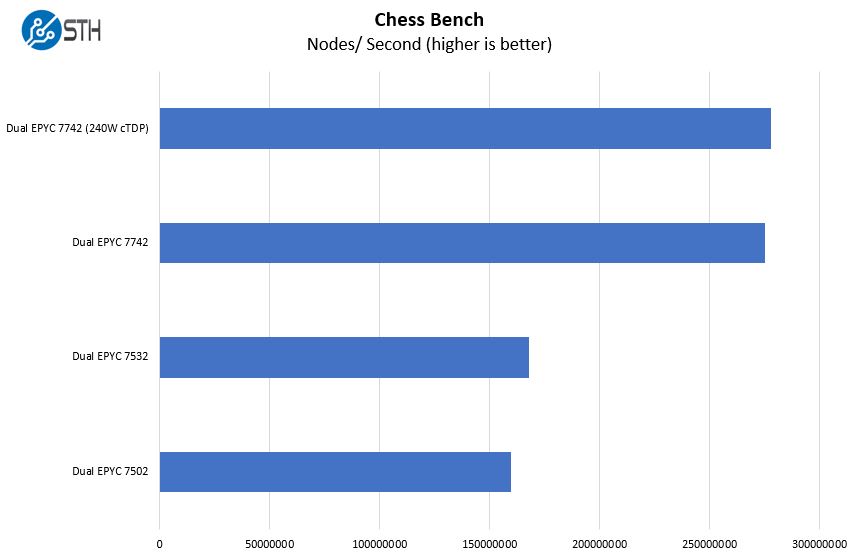
Again, we see some gains based on TDP, but the big gains are coming from core counts.
Next, we are going to discuss the platform from a market perspective, before getting to our final words.



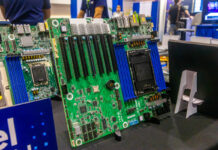
This is fantastic, and with water-cooled solutions you can easily run 3x high end GPUs and enough memory for local machine learning and video editing applications. Also with raid controller cards, have plenty of storage with 48 drives in the accessory cards alone. I look forward to this hitting market
Great JOB
One thing to notice CPUs are positioned exactly behind each other to give room for long PCie at the first slot. This will have a negative effect on Colling CPU 1 since hot air passing through CPU0 will be blowing on it. I think that is why they assigned 56 PCIe lanes on CPU0 vs only 36 PCIe lanes on CPU1
In general it is a great design
Free HBO! Nice
nice review, but i am missing the temps of the components during the test so we can compare with supermicro h11dsi
Hi erik – We typically do not publish temps as you would see on a consumer site. Most of these boards utilize chassis cooling and PWM fan control so there is not as much of an issue as we see on the consumer side.
Frankly, temps are an almost irrelevant point of differentiation with the H11DSi since the H11DSi is a PCIe Gen3 motherboard while this is a PCIe Gen4 board. To most, the ability to support PCIe Gen4 v. Gen3 is the significantly more important point of differentiation.
Interested in building a computer for CFD. Would it be possible to start off with one cpu and set of memory and have it run, then upgrade with a second cpu later?
I can never find a retailer for the newer AMD Gigabyte server boards. Any suggestions?
Sona.de has the board in europe, got mine there a few months ago and have been using it as a workstation board and its been very good.
Id like to see some more workstation related benchmarks, there’s seems to be quite a few people using epyc/rome boards for workstations in the forums.
Small error in the review, theres 100 lanes available not 88, and 128 used between cpus, for a total of 228/256 used(according to anandtech theres actually 129 for each cpu, four extra lanes for the bmc). Would be interesting to see a comparison if you review the coming asrock ROME2D16-2T board that only uses 92 lanes between cpus, to see if there’s much performance difference. That board has a few more pcie lanes available and 5 x16 slots and two m.2 slots so maybe even better as a workstation board.
I bought this board. Everything is fine except the boot loop. So if I reset, reboot or power cycle, the mobo boots up for 8 seconds and then cuts off the power. Then it tries to boot up again for another 8 seconds. This keeps happening over and over again and it wont boot up the OS.
However if I shut it down and remove the power cable / switch off the PSU for 5-10 minutes, then it can boot up properly again.
Has anyone experienced this issue? I have tried adjusting the BIOS, upgraded BMC and BIOS to latest version.